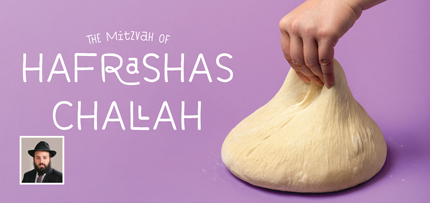The mitzvah of mezuzah is one of the most universally known mitzvos among non-observant and observant Jews alike. It is of such importance that it is mentioned twice in the recital of the Shema prayer, which we say multiple times daily. In fact, since it is the actual written Shema prayer that makes up the substance of the mezuzah, the mitzvah is doubly interrelated with the Shema — the description of the essence of a Jew.
The actual mitzvah of mezuzah is to write the first two chapters of the Shema on a kosher parchment scroll and attach it to the doorpost of one’s home.1 This mitzvah requires great adherence since one who is diligent in its observance will extend the lives of oneself and one’s family, while one who neglects it could G-d forbid do the opposite.2 One who constantly passes a mezuzah will be reminded of the oneness of Hashem and refrain from sinning. Mezuzah is also one of the only mitzvos that can be observed constantly, even while sleeping.
In addition, a dwelling with a mezuzah is guarded by our King in Heaven as He protects us from the outside of our homes, as opposed to the custom among mankind where the king remains indoors while the guards watch the doorway. However, one should not use the effect of protection as motivation to affix a mezuzah – it should be done because it is a commandment from Hashem.3
Others disagree with the notion that a mezuzah cannot be affixed with protection as the motivation since this is not the actual reward for fulfilling the mitzvah but a side (and natural) benefit.
However, those authorities require that the person acknowledge that they would fulfill the mitzvah of mezuzah with the same enthusiasm even if it did not provide protection.4
The Mitzavh
When one leaves his home, it is proper to place his hand on the mezuzah and some say, "G-d watches my leaving and entering."5 Others place the third finger on the word Shin Daled Yud (י"שׁד) written on the outside of the scroll and then kiss this finger. One ought not to touch the scroll unless in a case (as with a Torah) and should not remain in a house if one discovers there is no kosher mezuzah if alternative arrangements can be made.6
The mitzvah of mezuzah is incumbent on both men and women since it is constant, not time bound.7 In addition, one who fulfills the mitzvah of mezuzah is promised the reward of a long life, which applies to both genders.8 Although the mitzvah is also incumbent on women, a woman should not affix the mezuzos. If she did, they should not be taken down and put up again.9
Requirements
All types of buildings are subject to the mitzvah of mezuzah, the exception being "non-honorable" edifices, like an outhouse or bathhouse).10 In addition, gates around cities and towns require mezuzah at the entrance if the population is only comprised of Jews.11 In the days when Jewish people were required to live in walled ghettos they did not place mezuzos on the entrance so as not to antagonize the non-Jewish population of the city.12
However, with the exception of the aforementioned examples, all buildings require mezuzos; even barns and chicken coops, provided there is not an overpowering stench.13 Shuls that are strictly utilized for prayer do not require mezuzos unless they contain a room for dwelling.14 In fact, in the Bais HaMikdash, none of the gates had mezuzos except for the one that led to the room that housed the High Priest during his Yom Kippur preparations, and this requirement lasted only during that week.15 The source for this is that the verse states "your house" needs a mezuzah, not the house of G-d. However, a Bais Medrash which is also used for learning should have a mezuzah that is affixed without a brocha.16
A dwelling needs four walls in order to require a mezuzah.17 However, as stated, a gateway also needs a mezuzah even though it does not have four walls. Both a sukkah and rooms on a ship do not require mezuzos.18 A room must have a minimum area of four cubits in order to require a mezuzah (16 square feet).19 The ceiling must also be more than 10 handbreadths (approximately 40 inches) from the floor.20
All inner rooms require mezuzos on the doorways, even if there is no actual door, as long as the doorway has both a doorpost and a lintel.21 This requirement comes from the Exodus from Egypt when the Jewish people were required to place sacrificial blood on these areas to be protected from the plague of the Death of the Firstborn.22 The height of both sides of a doorway do not need to be even, but the doorway only requires a mezuzah if the right doorpost is taller.23 If the left side is taller a mezuzah is affixed without a brocha.
The doorpost of an archway needs to be at least 10 handbreadths tall in order to require a mezuzah.24 A lintel that is not straight still requires a mezuzah because it is similar to an archway. A doorway that is split by a pole in the middle is counted as two separate doorways if both doors open to the pole. If the pole is only erected for decoration, and not for structural integrity, only one mezuzah is required.25
One who rents a house or room for less than 30 days outside the Land of Israel or one who stays in a hotel outside of Israel does not need to affix a mezuzah, but one who rents in Israel, even for less than 30 days is required to have mezuzos on the doorposts.26 This even refers to a situation when one rents from a non-Jew. A hotel owned by a Jew needs mezuzos on all of the rooms up for rent, even those that will be rented to non-Jews, since the mitzvah is incumbent on the owner.27
One who rents a room must affix a mezuzah at his own expense and cannot remove it when he leaves (although the Jewish owner must reimburse him).28 However, if the owner or new tenant is not Jewish he may remove the mezuzah unless the owner asks him to leave it for a new Jewish tenant.29
If one rents a home from a Jew who is not Torah observant, one should not leave the mezuzos when moving out, because the apartment might be rented to a non-Jew.30 If a non-Jewish tenant insists on having a mezuzah, one can affix a mezuzah for him.31
A garage that is only utilized to park cars does not need a mezuzah. If it is also used for storage and connected to a house, or there is no public street that separates it from a house, then one should affix a mezuzah without a brocha. If the garage is separated by a public street and is not used for storage, it does not require a mezuzah.32
An elevator does not require a mezuzah33, but a walk-in closet does require a mezuzah without a brocha.34 A walk-in freezer or refrigerator does not require a mezuzah.35
The Writing
A mezuzah must be written on parchment produced specially for writing mezuzos (there is no minimum or maximum size) and should preferably be written on one piece of parchment with a margin of ½ a fingernail width on all sides.36
The first two parshios of Shema must be written in order and not be missing a single letter or the mezuzah is possul with no remedy.37
The letters must be written like those of a Sefer Torah with the appropriate togim on the designated letters.38 There are several accepted styles – Bais Yosef, AriZal, the Baal HaTanya and Vellish (which is utilized exclusively by Sefardim and should not be used by Ashkenazim).39 The guidelines must be pre-etched in the parchment and all of the written lines should be evenly spaced.40
It is customary to write a mezuzah in 22 lines with only the last two words written on the last line.41 The line separating Shema and V’haya should have the words written from beginning to end, without a larger margin.42
The mezuzah should be written with the right hand and rolled from left to right.43 On the outside one should write the name י"שׁד opposite the separating line on the inside.44 Also the letter following the holy name of Hashem are written on the outside.
Buying Guide
Due to unfortunate occurrence of unscrupulous proprietors of mezuzos, one should be careful to purchase mezuzos only from a reputable sofer to be sure they were written correctly.
When purchasing a mezuzah, one should see it unrolled in order to tell if it is shiny, which is a sign of a problematic, cheap mezuzah.
The minimum price for a reputable mezuzah is around $30. Otherwise, the mezuzah might be sold by an unauthorized dealer, written by a child who is not obligated in the mitzvah, written out of order, or the sofer might not have been mekadesh Hashem’s name before writing the mezuzah or did not prepare the parchment or ink with the proper intentions.
How-to Install
One places the rolled up mezuzah in a case and fastens it to the doorway with a brocha that encompasses all mezuzos attached in the house at that time.45
The mezuzah is attached on the outside handbreadth of the doorpost at the beginning of the top 1/3 of height, but the placement is valid as long as the mezuzah is more than a tefach from the top on the right side facing the entrance.46
The doorpost must be attached before the mezuzah is attached.47
One should attach the mezuzah on an angle with the top pointing inwards48 and a mezuzah can be affixed with glue provided it is strong enough to hold the mezuzah securely.49
Mezuzos should be checked twice every seven years50 and many have the custom to check their mezuzos before the birth of a child or when one is G-d forbid experiencing a serious illness or problem, and some have the custom to check them yearly in the month of Elul.51
Since the mezuzah protects our spiritual atmosphere indoors, it is essential to have a mezuzah on every entry. In contrast, the menorah influences the outside world, so we place it at the exit of our homes where it can be noticed from the outside.52

Passover
There is a very strong parallel between the mitzvah of mezuzah and the holiday of Passover, when G-d commanded us to paint our doorposts with the sacrificial blood of the Paschal lamb to protect our homes from the plague of Death of the Firstborn.
Once we left Egypt, we were protected from the outside by Hashem’s Cloud of Glory, just as Hashem stands guard outside our homes when our doorways are adorned with mezuzos.
May it be in this season of redemption, in the merit of adherence to the mitzvah of mezuzah, that we, too, will be led out of our current exile in a miraculous manner with the immediate coming of Moshiach and the ultimate Redemption.
1. Shulchan Oruch, Yoreh Deah 288:1.
2. Ibid.
3. Oruch HaShulchan 288:3.
4. Likkutei Sichos 19, Parshas Eikev.
5. Shulchan Oruch, Yoreh Deah 288:2, Rama.
6. Oruch HaShulchan 288:5.
7. Minchas Chinuch, Mitzvah 423:1.
8. Shulchan Oruch, Yoreh Deah 288:1.
9. Be’er Moshe, Volume 2, 100.
10. Shulchan Oruch, Yoreh Deah 286:1,4.
11. Shulchan Oruch, Yoreh Deah 286:3.
12. Shach 186:7.
13. Taz 286:1.
14. Shulchan Oruch, Yoreh Deah 286:3.
15. Oruch HaShulchan 286:17.
16. Shulchan Oruch, Yoreh Deah 286:10.
17. Shulchan Oruch, Yoreh Deah 286:6.
18. Shulchan Oruch, Yoreh Deah 286:11.
19. Shulchan Oruch, Yoreh Deah 286:13.
20. Shulchan Oruch, Yoreh Deah 287:2, Rama.
21. Shulchan Oruch, Yoreh Deah 286:17.
22. Oruch HaShulchan 287:2.
23. Oruch HaShulchan 287:4, Tur.
24. Oruch HaShulchan 287:11, Rambam.
25. Shulchan Oruch, Yoreh Deah 286:21.
26. Shulchan Oruch, Yoreh Deah 286:22.
27. Oruch HaShulchan 286:48.
28. Shulchan Oruch, Yoreh Deah 291:2.
29. Shulchan Oruch, Yoreh Deah 291:2, Rama.
30. Igros Moshe, Yoreh Deah 1:182.
31. Igros Moshe, Yoreh Deah 1:184.
32. Be’er Moshe, Volume 2, 82-85.
33. Be’er Moshe, Volume 2, 88.
34. Be’er Moshe, Volume 2, 93.
35. Ibid.
36. Shulchan Oruch, Yoreh Deah 288:1-5.
37. Shulchan Oruch, Yoreh Deah 288:3.
38. Shulchan Oruch, Yoreh Deah 288:7.
39. Chabad Sefer Torah style.
40. Shulchan Oruch, Yoreh Deah 288:8.
41. Shulchan Oruch, Yoreh Deah 288:1.
42. Shulchan Oruch, Yoreh Deah 288:13.
43. Shulchan Oruch, Yoreh Deah 288:12.
44. Shulchan Oruch, Yoreh Deah 288:15, Rama.
45. Shulchan Oruch, Yoreh Deah 289:1, Rama.
46. Shulchan Oruch, Yoreh Deah 289:2.
47. Shulchan Oruch, Yoreh Deah 289:4.
48. Shulchan Oruch, Yoreh Deah 289:6, Rama.
49. Minchas Yitzchok 7:70.
50. Shulchan Oruch, Yoreh Deah 291:1.
51. Chabad custom.
52. Shem MiShmuel 5674


 EN
EN  ZH
ZH  KR
KR  BR
BR  ES
ES  IN
IN  IL
IL 




